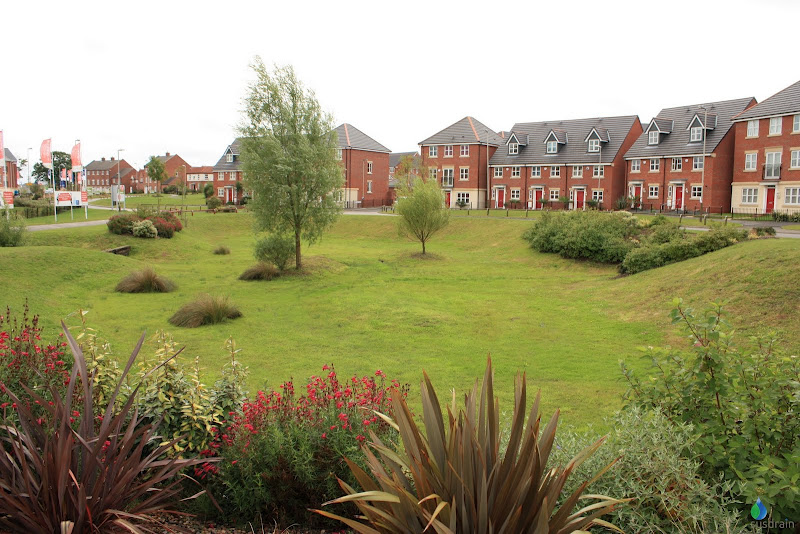- Delivering SuDS
- Using SuDS
- Background
- SuDS principles
- Benefits of SuDS
- Benefits of SuDS
- Why developers should choose SuDS
- Flood risk management
- Water quality management
- Biodiversity & ecology
- Amenity
- Air quality
- Building temperature
- Carbon reduction and sequestration
- Crime
- Economic growth
- Enabling development
- Flexible infrastructure/climate change adaptation
- Education
- Groundwater recharge
- Health and well being
- Pumping wastewater
- Rainwater harvesting
- Recreation
- Tourism
- Traffic calming
- Treating wastewater
- SuDS components
- SuDS components overview
- Source control
- Swales & conveyance channels
- Filtration
- Infiltration
- Retention & detention
- Wetlands
- Inlets, outlets and control structures
- SuDS performance & monitoring
- Delivery
- The costs & benefits of SuDS
- Adoption & maintenance of SuDS
- Legislation & regulation
- Design guidance
- Retrofitting SuDS
- Drainage exceedance
Component: Detention basins

Description
Detention basins are surface storage basins or facilities that provide flow control through attenuation of stormwater runoff. They also facilitate some settling of particulate pollutants.
Detention basins are normally dry and in certain situations the land may also function as a recreational facility. However, basins can also be mixed, including both a permanently wet area for wildlife or treatment of the runoff and an area that is usually dry to cater for flood attenuation.
Basins tend to be found towards the end of the SuDS management train, so are used if extended treatment of the runoff is required or if they are required for wildlife or landscape reasons.
Advantages and disadvantages
|
Advantages |
Disadvantages |
|
|
|
|
|
|
|
|
|
|
|
Where component can be used?
Residential: Yes
Commercial/industrial: Yes
High density: Yes
Retrofit: Yes
Contaminated sites: Yes
Sites above vulnerable groundwater: Yes (with liner)
Performance
Peak flow reduction: Good
Volume reduction: Poor
Water quality treatment: Medium
Amenity potential: Good
Ecology potential: Medium
Quantity
Basins can be designed to control flow rates by storing floodwater and releasing it slowly once the risk of flooding has passed. The stored water will change the water level, and basins should be designed to function in both dry and wet weather.
Quantity can also be influenced by the amount of water that can be allowed to infiltrate into the ground if there is no risk to groundwater quality.
Quality
Basins treat runoff in a variety of ways:
• settlement of solids in still or slow moving water
• adsorption by the soil
• biological activity
Amenity
Basins offer many opportunities for the landscape designer. Basins should not be built on, but can be used for sports and recreation. Basins can be part of public open space.
Maintenance
- Litter/trash removal
- Inlet/outlet cleaning
- Vegetation management
- Sediment monitoring and removal when required.
More on:



